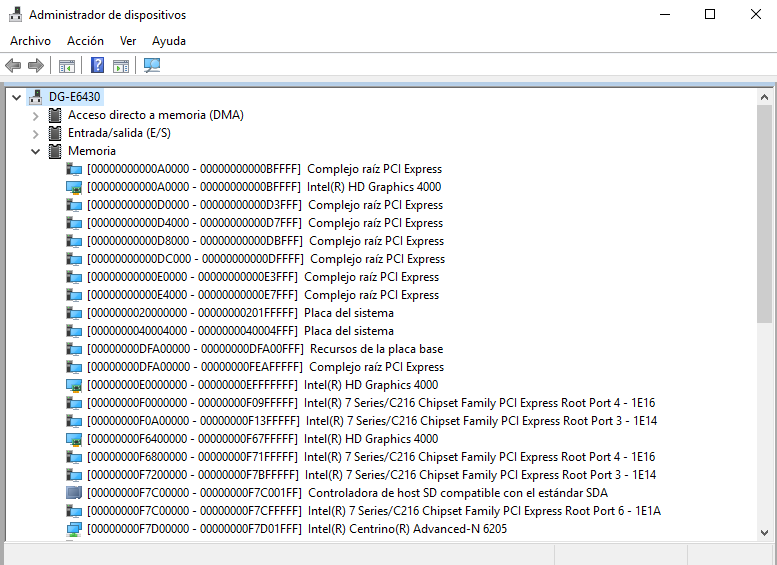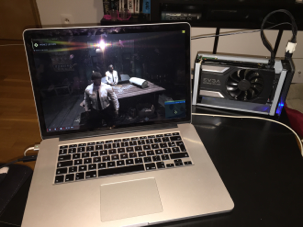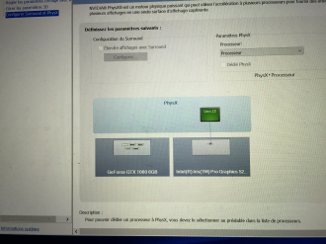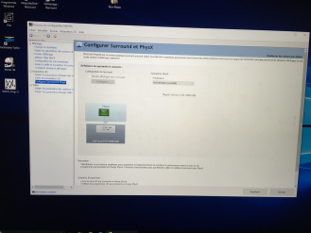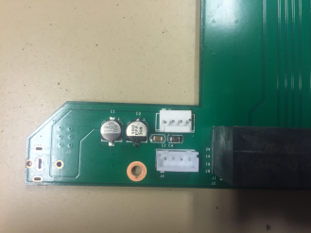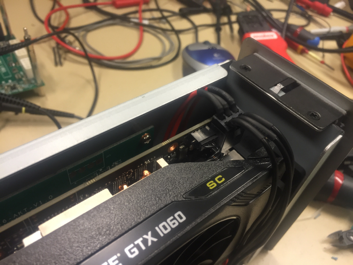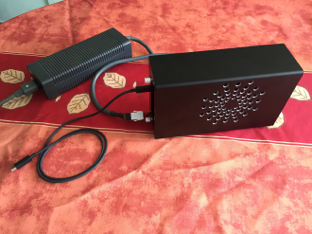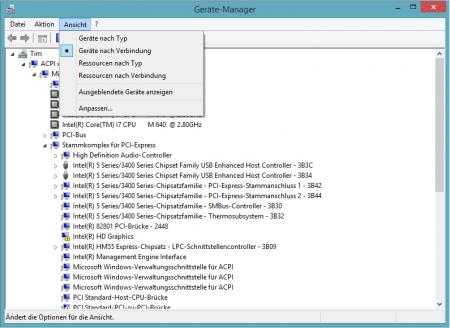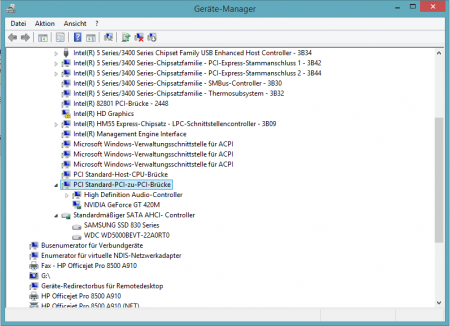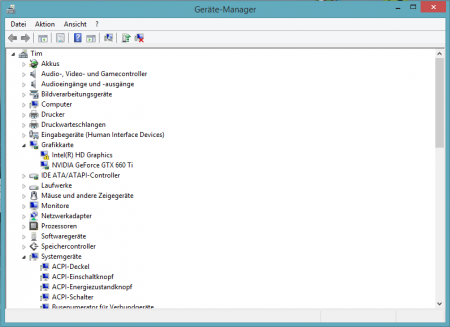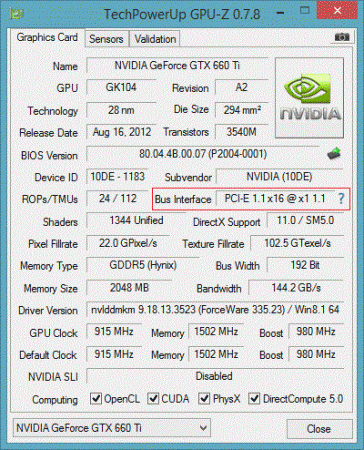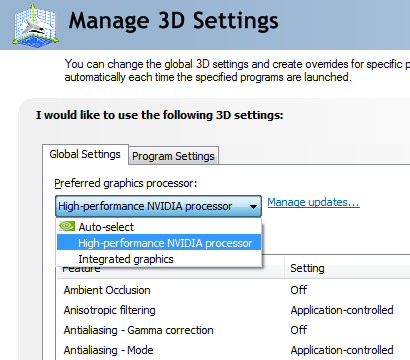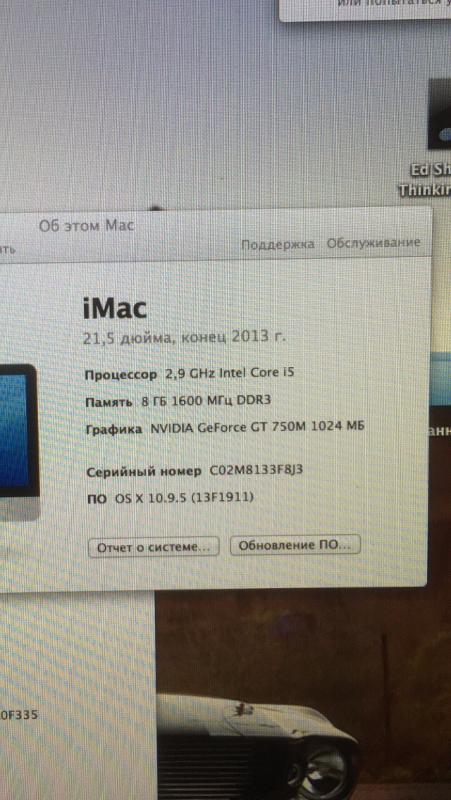Search the Community
Showing results for tags 'egpu'.
-
no more 4GB+ system RAM issues: use a DSDT override to extend the root bridge into 36-bit space (Windows 7/8/10 only - MacOS/Linux are unaffected) Introduction>>> This problem and solution is only relevant to Windows operating systems. MacOS ignores the root bridge and can allocate in 64-bit space as kizwan found here. Linux has a "noCRS" kernel parameter to ignore the root bridge boundaries so the OS can also also allocate in full 64-bit pci-e space. The this process aims to solve the problem of seeing an error 12 (This device cannot find enough free resources that it can use) issues against a eGPU in Windows Device Manager due to insufficient 32-bit addressing space. By manually adding a memory range outside of this 32-bit space, we can force Windows to operate in 36-bit space instead to host eGPUs. Know systems that will require this process are Dell Latitude Ex410 series, Samsung Series-4, Sony F-Series and MSI CRx20, HP-Elitebook/Probook xx60x/xx70x with AMD GPUs. Those have insufficient free 32-bit PCI space to accomodate a eGPU if have 4GB or more of RAM installed. They can't use Setup 1.30's PCI compaction to create sufficient space because they either have TOLUD=3.5GB, have lower TOLUD like 3.25GB but with an unmovable systemboard device occupying candidate free pci space making it unusable or are using an AMD or GTX650/GTX750 card that requires over 256MB contiguous space. Refer to Pre-Purchase FAQ #2(>> 2. How can I check if my notebook is compatible with an eGPU?) for details on how to check your TOLUD. The same solution can be applied to any 3-gens old PM965 chipsets (2007) or newer system. They have a 64-bit CPU and chipset so are fully PAE-36-bit/64-bit compatible. Dell Inspiron 1440/1525 (core2duo) and Dell Vostro 1015 (core2duo) have BIOS-configured 36-bit root bridges already so don't require this workaround. I happened to run into one of these problematic systems. A Dell E4310 with TOLUD=3.5G which can be maxxed out at 16GB of RAM. It's too nice an ultraportable to be need to downgrade RAM to 3GB of RAM to use an eGPU. I set of in pursuit of how to add a DIY eGPU to it which is documented below. Using Setup 1.30's 36-bit PCI compaction on the eGPU to relocate it in such space will see the eGPU still give an error 12 in Device Manager. Why is that? Avlan confirmed that the 32-bit root bridge definition limited allocation only to 32-bit space. The fix being a modified DSDT loaded as a registry override that extends the root bridge (ACPI PNP0A08 or PNP0A03 device) into 36-bit space. Avlan's fix was cryptic so wasn't attempted on other systems. After a bit of digging from the following references I found the QWORDMemory DSDT static resource entry can be used to easily extend root bridge entry into 36-bit space. Ref: [Qemu-devel] [PATCH 6/6] 64bit PCI range in _CRS table plus two examples at virtualbox and Coreboot. Tools required>>> The iasl and asl tools used are in 2570P-dsdt-override or (older) DELL-36b-root-bridge.rar. Allternatively, can download them from their original sources: The latest Windows Binary Tools (WBT): Download The Windows Driver Kit (WDK), which contains the Windows ASL Compiler: Download Notepad++ (or any other text editor) Step-by-step DSDT override>>> Need a 36-bit root bridge DSDT override The test Dell E4310's root bridge was extended into 36-bit space with the steps below. See also http://forum.techinferno.com/diy-e-g...html#post49833 , user angerthosenear's alternative instructions to those presented below where can use a DSDT Editor to simply the patching process if experience a compilation error: NOTE: kizwan expands steps 1-3 here. Useful if you need more assistance with these steps. Kizwan also provides a video tutorial . 1. Identify the resources used by the PNP0A08 or PNP0A03 devices in Windows. This can be found by perusing Device Manager->Resources by connection->Memory. Then check the last PCI BUS entry. Eg: 2. Capture the DSDT table using command below. This gives a raw dump of the ACPI tables in .dat files. dsdt.dat is the one we will be using. Newer versions of iasl no longer having the "-g" option in which case use acpidump instead. iasl -g acpidump -b 3.Decompile dsdt.dat to get an output dsdt.dsl text file that can be editted: iasl dsdt.dat 4. Open the resultant dsdt.dsl file and look for the PNP0A08/PNP0A03 'DWordMemory' resource entries. Under the last DWordMemory entry in that area, add a 'QWordMemory' (64-bit) entry shown as the second paragraph below. I ensure that I stay in the 36-bit range (< 64GB) so the location is compatible with the PAE-capable Win7 32-bit. I also chose a location above 48GB so we won't have issues with maxxed out memory. The range chosen was 48.5GB to 56.25GB. DWordMemory (ResourceProducer, PosDecode, MinFixed, MaxFixed, Cacheable, ReadWrite, 0x00000000, // Granularity 0x000A0000, // Range Minimum 0x000BFFFF, // Range Maximum 0x00000000, // Translation Offset 0x00020000, // Length ,, , AddressRangeMemory, TypeStatic) QWordMemory (ResourceProducer, PosDecode, MinFixed, MaxFixed, Cacheable, ReadWrite, 0x0000000000000000, // Granularity 0x0000000C20000000, // Range Minimum, set it to 48.5GB 0x0000000E0FFFFFFF, // Range Maximum, set it to 56.25GB 0x0000000000000000, // Translation Offset 0x00000001F0000000, // Length calculated by Range Max - Range Min. ,, , AddressRangeMemory, TypeStatic) 5. Create a dsdt.aml file with the 'iasl -oa dsdt.dsl' compiler directive. '-oa' disables all optimizations found necessary to get working solutions. It is unlikely this will succeed first time, as the compiler is very strict. In general warnings are acceptable, but errors may require some fiddling. Those will need to be corrected with common patches in Common DSDT patches for Ivy/Sandy/Haswell laptops, How to fixed DSDT errors? (kizwan). Consider asking for guidance at tonymacx86.com DSDT forums. DSDT editting alone could have it's own forum. Then try compiling your DSDT again. iasl -oa dsdt.dsl 6. Load the dsdt.aml file into into the registry as a DSDT override. You must be an admin user for this to be successful. asl /loadtable dsdt.aml 7. [Windows 8.x/10] Enable test signing mode for the registry override to apply. You must be an admin user for this to be successful. bcdedit -set TESTSIGNING ON An alternative to disabling testsigning in Win8/10 is to do a Win8: Perform a DSDT substitution within Setup 1.30 to overcome TOLUD issues. Win7 users who don't want to do the registry override can also do this DSDT substitution. 8. Check you now have a new Large Memory entry in Device Manager->Resources by Connection->Memory as shown below: 9. The same fix was done on a Dell E4300 and Win7 did automatically allocate the eGPU into the 36-bit space. If you still see error 12 then there are two options to pursue: Re plug'n'play the devices. Go into Device Manager -> Video cards, delete the eGPU. Also go into Device Manager -> System devices and delete the PCI Express Root Port x entries. Upon restarting the system, halt Win7 startup with F8, attach and power on your eGPU and then proceed to load Win7. Win7 should now be clever enough to re-allocate the eGPU into 36-bit space upon realizing there is insufficient 32-bit space to host it. Can go one step further and delete your eGPU NVidia/ATiAMD driver, restart the system and reload it. That may help as well. Hard allocate the eGPU into 36-bit PCI space before booting Win7 using Setup 1.30. Select PCI compaction->Endpoint=56.25GB (36-bit) and then select Run compact. When prompted for the scope select eGPU. The result will be similar to that shown in the spoiler in step 8 above, but with the eGPU rather then the Intel HD iGPU being in 36-bit PCI space. Can then proceed to automate this by editting your %DRV%:\config\startup.bat (or V:\config\startup.bat in windows) so can just select the Automated startup via startup.bat Setup 1.30 bootitem and have it do everything for you: call speedup lbacache call vidwait 300 call vidinit -d %eGPU% call pci call chainload mbr Testing results>>> * Lenovo X230 (jay_dark_dry): SUCCESS! Allocated the eGPU into 36-bit space. * Lenovo T430 (arteart) : SUCCESS! Allocated the eGPU into 36-bit space. * HP 2570P (Tech Inferno Fan): SUCCESS! Allocated the eGPU into 36-bit space. * Dell E4310 (Tech Inferno Fan): SUCCESS! I relocated the Intel HD iGPU into 36-bit space using Setup 1.30 as shown in step 8 above freeing 256MB of contiguous 32-bit space to host an eGPU, so it will definitely work. Plus there is plenty of 36-bit space for the eGPU too. Unfortunately my PE4L 2.1 isn't working so I can't show the iGPU+eGPU both being active but it will work * Dell Studio 1557 (Kizwan): SUCCESS! His HD5870 successfully relocated to 36-bit pci-e space. FAQ>>> 1. When do I need to hotplug my eGPU to overcome the error12 with a DSDT override?(kizwan) 2. How to clean the DSDT override properly? (kizwan) (*We will need to delete DSDT key in registry) HKEY_LOCAL_MACHINE\SYSTEM\ControlSetXXX\services\ACPI\Parameters\DSDT * where XXX are 001, 002, 003 & so on. and HKEY_LOCAL_MACHINE\SYSTEM\CurrentControlSet\services\ACPI\Parameters\DSDT I didn't really tested whether deleting "DSDT" key in ControlSetXXX (XXX are 001, 002, 003 & so on) really necessary but I will test this when I test your latest Setup 1.30. For sure deleting "DSDT" key in CurrentControlSet is necessary. You can access registry via command line. So, you can put it in .bat file.
- 178 replies
-
- 4
-

-
- dsdt override
- error 12
-
(and 1 more)
Tagged with:
-
Has any company out there launched a laptop with an external MXM port? Just curious since with the boom in the gaming laptop market and some companies launching eGPU thunderbolt enclosures, isnt the MXM faster? Is it because of licensing issues? or hardware problems?
-
Hi to everyone , I have troubles to eliminate the error 43. I have beast 8.0 EXpress card cable cx650M Source power I have tried to install different versions of driver nvidia but the error persists. When I start the laptop and the power supply at the same time I have a black screen. but if I wait about 10 minutes and then I turn OFF the laptop the restore computer appears , seems like the laptop worked normally (but I have no video signal). Sorry for my poor english.
-
Hello guys ... i wanna make sure that everything is going to work fine with my laptop so i got some questions First of all my laptop is Lenovo Z51-70 CPU: I5-5200U 2.2ghz iGPU Intel HD 5500 dGPU:AMD R9 M375 Ram: 8GB (will raise it to 16GB) HDD: 1TB stock one SSD: 120GB (for my games and windows only) now i investigated a little about eGPUs and found that i need a M.2 or thunderbolt, i've found that my wifi card use a M.2 a/e key aka ngff, so i will be using the GDC Beast NGFF version to the bad part / question part What do i need to know other than the stuff above? what is the white-listing thing? i found on support forums that my laptop support some wifi cards only and it's bios cann't be modified according to bios modifying forums (not here) in same time saw some posts on reddit that says if ur bios have UMA graphic option then you will need to disable PAX / WIRELESS and enable UMA and it will work fine, the question is that true? i wasn't able to find anyone who did it on Z51-70 i found only 1 post on reddit for Z41-70 (which after research found that both are using same M.2 a/e key slot and also same bios... but the one who posted only replied that it's recognized with some errors and never replied back with any updates so still not sure about it.....
-
Hello guys, Thanks for this incredible forum, I hope I will learn a lot from the gurus ! I am trying to make my eGpu MSI GT X970 work on my laptop with K1100M integrated GPU. This are my specs: CPU: 2.7GHz Intel Core i7-4800MQ (quad-core, 6MB cache, up to 3.7GHz with Turbo Boost) PSU : ??? Graphics: NVIDIA Quadro K1100M / Intel HD Graphics 4600 RAM: 32 GB Storage: 1TB I got a V8.0 EXP GDC Laptop External Independent Video Card Dock with the express card version ( I am not really hw savy) and I am looking for a good psu to power my MSI GTX 970 4G Could you kindly suggest a good PSU that i could use to power this GPU ? I am also willing to do as many experiments needed Thanks for reading my post -zepvalue
-
Hello everyone. I put on a eGpu setup after quite a bit struggle 2 years ago and I used play games just fine. After a while I sold my graphics card gtx 970. Now since 2 days I am trying to put the eGpu setup back again this time with a Gtx 770. I couldn't understand the problem. I can shut my dGpu off with diy 1.30 setup. ( usb booted) And my laptop sees gtx 770 along with my igpu Intel HD graphics 4000. After driver installation when I try to play a game laptop is tring to use iGpu instead of Egpu. (tried to delete and install driver few times) With MSI afterburner I can see eGpu is %0 all the time. Can it be power problem cause graphic cards fans ( Msi gtx 770 twinfrost ) are working all the time they dont stop. Or what else can it be. Thx.
-
We've had a stack of recurring questions from with problems getting a mPCIe eGPU working. This includes GPU-Z not reporting no clock details, error 10/43 or even not being detected at all. Overall it's more troublesome getting mPCIe working than say expresscard or Thunderbolt. Here's some common problems and some troubleshooting steps to correct them. Getting a black bootup screen, resolving error 10/43 or ACPI_BIOS_ERROR win bootup messages Here the BIOS doesn't know what to do when it sees an eGPU. So the solution is to not let the BIOS see it. Do that by setting the delays on the eGPU adapter (CTD/PTD - EXP GDC or CLKRUN/PERST# on PE4L/PE4C). Boot with eGPU adapter in the wifi slot into Setup 1.30 or Windows. Is the eGPU detected? I'll add that should error 43 continue AND you have a NVidia dGPU as well as NVidia eGPU then it's likely because of having the mobile NVidia and desktop NVidia drivers loaded simultaneously. Proceed to uninstall ALL your NVidia drivers, use "DDU" to clean NVidia registry entries and do a 'clean' install of the latest NVidia desktop driver. mPCIe port that hosted the wifi card disappears when connecting an eGPU in it's place Use the Setup1.30 PCIe Ports->enable to enable the missing port. eGPU does not get detected Overcome mPCIe whitelisting by booting with the wifi card and then hotswapping in the eGPU. That way the BIOS will enable the mPCIe port to work. 1. Boot with wifi card into Windows, sleep system, swap wifi card for mPCIe eGPU adapter and ensure eGPU is powered on, resume system. Do a device manager scan in Windows. Is the eGPU detected? 2. Boot with wifi card into Setup 1.30 *carefully* hotplug the eGPU adapter in place of wifi card. Hit F5 to rescan the PCIe bus. Is the eGPU detected? If this enables detection then avoid this tedious hotswapping by seeking a unwhitelisted modified BIOS for your system OR test the Setup 1.30's PCI ports->undo_whitesting feature. eGPU still not detected - set the PSU to be permanently on The latest EXP GDC and BPlus eGPU adapters try to manage the PSU to only power on after they detect a signal. This can cause a race condition where the eGPU isn't ready to go when the CLKRUN signal is asserted. Avoid this by jumpering the PSU so it's permanently on rather than being managed. Depending on the PSU you are using refer to the following doco on how to do that: http://forum.techinferno.com/enclosures-adapters/8441-%5Bguide%5D-switching-atx-psu-using-paperclip-trick-swex.html http://forum.techinferno.com/enclosures-adapters/9426-220w-dell-da-2-ac-adapter-discussion.html eGPU still not detected - a non-standard mPCIe implementation by your vendor? PERST# mPCIe pin 22 may need to be isolated due to a non-standard implementation by your notebook vendor: http://forum.techinferno.com/enclosures-adapters/10812-pe4x-series-understanding-clkreq-perst-delay.html#post142689 eGPU still not detected - faulty hardware? If you still don't get detection then test the video card and eGPU adapter in another machine to confirm neither is faulty. NVidia driver stops responding EXP GDC, PE4H 2.4 and PE4L 1.5 all use a socketted cable and therefore are not true Gen2 compatible device. This error indicates there was transmissions errors. The solution is either to get a better Gen2-compliant eGPU adapter such as PE4C V3.0 or PE4L 2.1b (both with soldered cable), or downgrade your link from Gen2 to Gen1 using BIOS options or Setup 1.30 Other troubleshooting help resources? See DIY eGPU Troubleshooting FAQ.
-
Hallo Leute, Ich habe mir zu Weinachten eine Akitio Thunder 2 mit einer EVGA GTX 1060 6gb für meinen late 2013 IMac mit einem 120W AC Adapter von Leicke geholt. Zu meinem Problem, Ich habe alle mögliche Treiber probiert ich habe mein Windows zweimal neu aufgesetzt und habe verschiedene Sachen im Geräte Manager deaktiviert. Was kann ich da jetzt noch machen das die evt. doch geht? Danke schon mal im voraus Harry
-
- egpu
- gtx 1060 6gb
-
(and 3 more)
Tagged with:
-
So my laptop (latitude e6430) has an expresscard, so I wanted to get a eGPU for it. I did some research, and already got the adapter, but theres one thing I need. I need to know what is my TOLUD and what GPU should I buy for it, respectively. Here I attach a screenshot of my device manager and my laptop's specs so that someone may help me. If I got this right, my tolud should be 3.5Gb. Is this true, and if so, what GPU should I buy? Processor: i7-3520M RAM: 8GB note: sorry that the screenshot is in spanish, but I dont think that should matter
-
First, hello! Although I am new here, I have been a long time following this forum, and without all of you this hasn't been possible,so thank you! System: Hardware Dell 5430 14" Core i5 3320M 8GB RAM (1x1600Mhz) iGPU Intel HD 4000 Software Win 10 Pro 64-bit Versión 10.0.14393 [UEFI] GPU Driver AMD Radeon 17.2.1 (non-whql) EGPU MSI Radeon RX 480 GAMING X 8G BEST EXP GDC V8.4d [Express Card] PSU Deer 400W Configuration Just connect the egpu to PC via ExpressCard (PSU ON & PC Off), turn on the PC, and GPU was detected and it worked. [PTD: Off] Others: With 16.12.2 Drivers have some better performance, but my screen blinks sometimes Freesync works well This test have some OC to have similar performance that with whql drivers Video demo: Hardware Info: TEST & BenchMark 3DMark TimeSpy 1.0 3242 (GPU:3920) http://www.3dmark.com/3dm/18115631 3DMark FIRE STRIKE 1.1 7375 (GPU:12996) http://www.3dmark.com/3dm/18115814 Ungine Heaven 4.0 [Basic]: 3025 [Extreme]: 1495 Ungine Valley 1.0 [Extreme HD]: 1933 Games [FRAPS - 5Min ingame]: Game [1080] FPS AVG FPS Min FPS Max Config The Witcher 41.66 28 52 Ultra GTA V 23.66 13 38 Maximun Setting [Mod Cars] GTA V 32.2 20 72 High Skyrim 59 35 63 Ultra [Mod ENB Photorealistic] Screenshots Bench:
-
Hi i searched alot and could not find any help regarding external gpu for my hp pavilion model 15-e020tx. Even though its not a really old laptop. Would appreciate if some 1 could guide me to a link if it has already been shared. I want e gpu for playing a game dota 2. specifications of laptop
- 1 reply
-
- egpu
- hp pavilion
-
(and 1 more)
Tagged with:
-
Hey guys, Let me introduce you my eGPU setup, realized on a 2013 15" retina Macbook Pro, model equipped with a dedicated GT 750M. I am using an Akitio Thunder2 PCIe enclosure and a EVGA Geforce GTX 1060 SC 6Gb. I wanted to use both internal and external display on my Mac. I was looking for information during weeks before buying it and wasn’t really sure if it would work as I wanted to. Many people are convinced that using the internal screen is impossible or way more complicated if the Mac has a dedicated GPU. I spend a whole week formatting and testing, using UEFI, BIOS, considering going back to Windows 7 (not for long)… I finally used Windows 10 UEFI, the programs rEFInd and GPU-switch and nothing else ! No need for an HDMI headless ghost or any program to spoof the number of screens. I made a video to show you the whole installation process, I hope that it will help: My GF did the voice acting as I wasn't convinced by my own If you prefer a text-based tutorial, here are the different steps: 1) Installation of Windows 10 in UEFI mode On the 2013 retina Macbook Pro, the SSD is a PCIe model. This seems related to the UEFI mode used by default when using the Boot camp assistant. If you don’t want to use it or are using another model of Macbook, you can follow this excellent tutorial to force the UEFI mode: http://fgimian.github.io/blog/2016/03/12/installing-windows-10-on-a-mac-without-bootcamp/ You just need to create a conventional partition and convert your table partition from “hybrid” to “protective”. By doing this, Windows will see a GPT disk instead of MBR. You just need to boot your USB drive on EFI mode. Once Windows is properly installed with the correct Macbook drivers (another reason to prefer the boot camp assistant), you need to go back to Mac OS. 2) Installing rEFInd rEFInd is a boot manager tool, like rEFIt or GRUB. Its first advantage is the ability to choose the OS without the need to press a key at startup. And the real reason why we are using it is to spoof the computer to allow Windows seeing the entire installed hardware. You can install refind from this link: http://www.rodsbooks.com/refind/ Then you need to activate this spoof ability by opening a terminal and typing these two commands: sudo mkdir /Volumes/efi sudo mount -t msdos /dev/disk0s1 /Volumes/efi Now, you can see your EFI partition in your Finder. Go to EFI/EFI/refind and open the file refind.conf with textedit. Search for the “spoof OS version” and remove the comment symbol # Reboot your computer and choose Windows on the rEFInd screen. Open your device manager, you’ll see your iGPU (intel iris pro graphics 5200) and dGPU (Geforce GT 750M) 3) gpu-switch GPU-switch can be downloaded from there: https://github.com/0xbb/gpu-switch Download the windows version, available in the description (direct link : https://github.com/0xbb/gpu-switch/releases/download/v0/gpu-switch-windows.zip ) Install Microsoft C++ redistributable (not sure which version do the trick, I’ve installed each version in x64 and x86 just to be sure) open the file integrated.bat with administrator rights, you should see the word “success” 4) GPU driver installation Not sure if this step is necessary but I’ve removed the dGPU driver before installing nVidia GeForce experience. The program DDU (Display Driver Uninstaller) is perfect for that. You can download it using this link: http://www.guru3d.com/files-details/display-driver-uninstaller-download.html Choose to uninstall and shutdown the computer, as you will install a new hardware indeed When your computer is off, plug the power supply to your eGPU, press the computer power button, wait for the chime and the rEFInd screen to appear, then plug your eGPU to the Macbook and launch Windows. If rEFInd is stucked, hold the power button until the computer is off. You should now see three graphics cards in the device manager, two of them not recognized at this point. Install nVidia GeForce experience and the latest nVidia driver. The GPU list will be updated at the end of the installation process. Re-launch GPU-switch and reboot. You don’t need to unplug the eGPU when rebooting. Now, your eGPU should have an error code 12, with unsufficient resources available. Just right clic on the dGPU (GT 750M) and disable it. Re-launch gpu-switch just to be sure (integrated.bat) and reboot. Just a last step and you’ll good to go Right click on the nVidia icon in your systray and open the configuration panel. Go to PhysX and set it to automatic instead of processor, like on this picture: That’s it, you can now launch your games on the internal screen or using an external monitor To switch between both, just plug the display on the eGPU and use the shortcut Win + P (Cmd + P on a Mac keyboard) to toggle between both screens. You can also duplicate them, it works, but don’t expect any kind of good performances doing this Now, the most important part, to avoid screwing your configuration: every time you go back to Mac OS, Windows will switch to the dedicated GPU (maybe also when turning off the computer, I’m not sure). For this reason, always re-enable the GT 750M before turning off the computer! Otherwise, you’ll get a black screen at Windows startup. Just follow this procedure when you want to use your eGPU: - Use gpu-switch to set the integrated GPU as primary - Disable the dGPU from the device manager - Turn off your computer or reboot - When you see the reEFInd screen, plug your eGPU and launch Windows - Play you favorite video game or launch your intensive GPU application (there are two schools) - Re-enable your dGPU from the device manager - Turn off your computer - Unplug your eGPU Now, some advices based on my little experience: If your end up with a black screen, you can restore Windows to a previous restauration point or remove the display driver. If you really can’t boot windows, using Parallels Desktop, you can boot your Windows partition from a virtual machine, then remove the display driver. At first, I was experiencing a game crash and the GPU fan running at max speed, when launching any sort of game. This issue was caused by the power supply connection, using an Xbox 360 S adapter with too thin wires These wires caused a voltage drop when consuming the 100W needed when playing a game (against 15W on Windows) About the electrical connections, here are a few pictures I’ve added a connector on the free PCB footprint to avoid soldering wires on the board. The cables are 0,75mm2 section and fits perfectly the original jack hole. About the PCIe power connector at the top of the graphic card, I had to cut it with a Dremel to fit the enclosure. You can find specific (and pretty expensive) cables on Ebay if you don’t want to modify one. For the ventilation, a colleague helped me cutting holes in front of the fan. I’m not sure to keep this solution, as some games make it very noisy. Let me know if this tutorial or the video did help you. Don't hesitate to ask for support if you want to do the same setup. Some websites are pretty discouraging about the concept of eGPU, the whole process is not pretty user-friendly but I'm happy to see that there is an active community growing each year !
- 3 replies
-
- 2013
- retina macbook pro
-
(and 7 more)
Tagged with:
-
masterblaster 2.0 comment>> This is the first Windows 8.x implementation where a dormant iGPU was activated to enable x1.Opt (x1 pci-e compression) on a 1st gen i-core (dual core) system supplied by the manufacturer with a dGPU only. First I want to say thank you for Tech Inferno Fan for his huge help the whole project and I want to apologize for my bad english. I'm from Germany and still a student so be surprised A long time ago I saw a video with an graphics card running external connect to an notebook. I always thought about doing this by myself and one day I decided to order an eGPU adapter and the graphics card. First the specs of my notebook: Model: Acer Aspire 5742G CPU: i7-640m (upgraded from an i3-370m) with dormant Intel HD iGPU not connect to LCD GPU: Nvidia GeForce GT420m dGPU only RAM: 8GB DDR3 So now we are getting to the things you need: free mPCI slot (unfortunately the Aspire 5742G has only one slot, so you need to remove the Wifi-Card. In my sitution no problem because I'm using lan either way.) PCIe -> mPCIe adapter (PE4L, PE4H or what I used the PE4C) A GPU of your choice (I chose a Nvidia GeForce GTX660Ti) A PSU that has enough power (I used an PSU with 550W found in the basement) Setup 1.x (buy it from Tech Inferno Fan for 25$) -> it's necessary, without you wouldn't be able to run the eGPU A case or something to store you eGPU + GPU (not necessary, but looks tidier) Windows 8.x (I wasn't successful with Win 7. If you want to know more about it, you can read more here.) External Display -> internal isn't working because the dGPU is disabled and the iGPU isn't connected to the LCD Some explanations: The biggest problem about the whole process is that the Aspire 5742G has a iGPU but it's not connect to the LCD and even if you have enabled it via Setup 1.x you are always getting Error 43 in device-manager. As seen on the screen here. So the point is to enable the iGPU and disable the dGPU under Win8.x to get a working x1.Opt setup. The way of just disabling the dGPU via Setup 1.x is ending up in freezing and you have to restart the notebook. So I tried a lot of things with Tech Inferno Fan. So many things and I was close to just give up all. But then he had the great idea to just disable the PCI port where the dGPU is connected on. And that's the way how it's working Let's get started: 1. You need to buy the Setup 1.x from Tech Inferno Fan. Here you will get more information about it. 2. Install it as mentioned in the email. 3. Then navigate to "C:\eGPU" and run the "eGPU-Setup-mount.bat" batch file to install Setup 1.x. Now you will see a new drive named "DIYEGPUIMG (V:)" 4. Go to "V:\config" and just replace the "startup.bat" with my startup.bat startup.zip. (It's just to make the whole process easier. It's configured by Tech Inferno Fan and optimized by me. So it's easy and fast to boot up.) 5. If you have done this all correctly you should get an option "DIY eGPU Setup 1.30" on startup. (When not make you sure you missed no step or done it wrong.) 6. Select the Setup 1.30 and run the "automated startup" (You are now using the startup.bat you have downlaoded an replaced with the stock.) 7. Some lines will now come up and then you get an message that your eGPU isn't connected. Just power on your eGPU (PSU + PCI adapter. Make sure, the switch shows "ON") and connect the mPCI adapter to your notebook. 8. If done correctly you now should be back in the selection menu where you can select Windows 8.x or the Setup 1.30. Now select Windows 8.x. 9. Windows is booting normal and you should see your desktop. (If not -> make sure you did everything right.) 10. Go to device manager and you will see two new devices. Click on install drivers and wait until it finished. (eGPU driver took about 10 minutes so don't be impatient.) Important: It can happen that you get an bluescreen while installing the iGPU driver. I don't know why, perhaps because it isn't connected to the LCD. When this happens just start at point 6. and go on. 11. Now download the graphics card driver that is compabtile to your graphics card. Uninstall your old driver and install the new one. (You can do this step before starting with the eGPU but I don't think there is any difference in doing this after.) 12. When you have successfully installed your Nvidia driver now it's getting tricky but still such simple 13. Go to device manager and select "devices on connection" (German: "Geräte nach Verbindung") and search where the dGPU is connected on and just disable it. (I got an blackscreen and I needed to restart my laptop via the power button. But it doesn't matter you need to restart your notebook anyway to get fully working x1.Opt Setup. 14. After restart (just like point 6. you can check the device manager and you should only see the "Intel HD Graphics [iGPU] and your video card that you bought. In my situation the GTX660Ti [eGPU]. (If not -> check the steps above.). 15. You should now have a fully working (expect the internal screen isn't working) x1.Opt Setup. You can check this in the Nvidia cobtrol panel by checking if the "High-performance Nvidia processor" is available. Or go to GPU-Z and check it there. 16. At the end you can run 3dMark06 or other benchmark tools to compare your results with others. Or just play a game and enjoy it Here is my 3dMark06 score. With the same notebook you should get similar results. (+/- depends in you graphics card.) Something else to say: There are some downsides of using the eGPU Setup with an Aspire 5742G. I'll list some of my established. Need of removing wifi card You need to plug the eGPU in after running the automated startup. Otherwise you'll running into reboot loop. You are not able to go into sleep mode and wake up successfully (biggest downside for me) You won't get the full graphics power as on an desktop computer If you have any question or you think I forget something - feel free to ask me. startup.zip
-
Hi guys, I need some help from you guys if you wouldn't mind. I'm useless Specs:- Samsung RV520 8gb DDR3 I7 2720qm @2.2ghz 1x HDD 500gb 1x HDD 300gb Nvidia GTX 650 Ti BOOST EXP GDC BEAST 8.5c DIY Setup 1.3 DELL 220w PSU After a lot of messing around I have managed to get this egpu to work when downgrading to 2gb, Which makes me think I just need to change my TOLUD to get it to work. I have read and tried to make a successful DSDT file however I don't really know what I'm doing with these driver edits and haven't been able to get it to work particularly the error fixing on compiling the dsdt. However When I did have it working on 2gb ram. I ran heaven Bench, The GTX 650 under load makes strange noises and crashes the display driver multiple times. Could any of you more knowledgeable individuals give me a hand please Thanks
-
Hi . İ need your hepls. Firstly my notebook model is lenovo z500. Intel Core i7 3632QM gt645m g. i could not find information abouth z500. Does eGPU work on Lenovo z500 ?
-
I have a Dell Precision M6800 and I would like to build an eGPU for it as the Nvidia Card is getting a bit old. I have a Xbox 360 Slim lying around. Would it be possible for me to use the Xbox’s GPU ?
-
After some trial and mostly error, I've come to seek help. This is my setup: Dell Inspiron 5759 Windows 10 8 GB RAM Intel i7-6500U Internal GPU: AMD R5 M335 EXP GDC v8 via NGFF (wifi card) External GPU: AMD RX560 4GB Corsair VS350 What I've done so far: I first started with a GTX 1050Ti. My laptop did recognise that card, but obviously I got the code 43 error due to NVidia banning the use of eGPU's in their 10xx series. So I returned that card and bought a RX 560 instead. But now I have even more problems. It's either blackscreen or booting on the internal display. I've tried to hotplug (boot with wifi card, and then when in sleepmode swapping for eGPU), delay the boot by going into BIOS, turning the ATX power on (permanent power via EXP GDC). The only thing I haven't tried is the delay on the EXP GDC. Any help is greatly appreciated.
-
Hi all, I posted a topic to share my successful installation one year ago, here is the topic link : And after a perfect use for almost one year (11monthes and few days), from yesterday the egpu is not detected by Setup1.30 anymore. I didn't change anything on the computer side, nor on the egpu adapter. Same cpu, memory etc. Now when I boot, one of the 4 LED on the egpu adapter turn RED and setup1.30 is no more detecting the egpu card. Also the fan of the gtx750ti is staying at a high speed run. I join the picture of the egpu adapter with the LED turned RED. If anyone have an idea of what happen... One more thing, one time of ten time booting, egpu is working fine. But freeze after around 30mn of use. SPEC : ACER iconia-6210 (dual screen laptop, no physical keyboard) CUP core i5 480M RAM 8gb SSD 256 Windows 10 pro 64bit pe4c v3.0 mPCIE connecter Dell D220P AC adapter Asus GTX750ti
-
Hello! My name is Arman! I from Armenia, and sorry for my English! I have iMac Late 2013 with Intel core i5, 8Gb, NVIDIA GeForce GT 750M 1024 Mb. I have Boot Camp installation on my iMac (now i have 7 Windows, but i can update it to 10 or 8 Windows) I discover that there is an Akitio 2, wich can use with iMac 2013 for productivity increase. I want to use akitio 2 with GTX 1050 ti 4Gb, but i dont know how it is intalling on iMac? Who can write for me the process of installation ALL equipment (akitio 2 + GTX 1050 ti + imac)? What i must to do? I talking about from the very beginning to the very end. PLEASE everyone, help me. You are my last chance !!!!
-
So, I am pretty new to this eGPU thing, and I want to try and setup an eGPU for my Dell XPS L502X. All the other guides I have read are confusing to me and I was hoping someone here could clear it up and help me setup. (I'm running an intel HD 3000 and an Nvidia GT 525m) Thank you!
-
setup i have:asus x54c,Nvida geforce gtx660,psu corsair cx600, dock i use: exp gdc v8.4d note:(originally the notebook had intel celeron b815 processor, i replaced it with pentium b970,and added 2gb of ram other than that no other hardware changes were made) first time i connected it all and powered on,gpu fans started spinnig very fast and screen was on but all black and nothing happened so i tried the delay switch but with the same result, then i connected external monitor to the gpu, finally i was able to see manufacturer logo,but then it hanged on windows loading screen(back then i had windows 7 so you could clearly see the windows logo animation stopped) so i tried to hotplug the egpu by booting with original wifi card in (mpcie) sleeping then plugging the egpu in and resuming,but always i did so i was greeted with instant crash so i went searching for answers on the internet and i learned that i should isolate pin 22 so i did, finally i was able to boot into windows (with delay set on maximum) but the card wasnt detected, i purchased setup 1.35,installed windows 10 bios (i had windows 7 uefi) but i couldn´t get it recognized even in there. im sure all the componnents are fine, i got it sucesfully runing on my older laptop (lenovo u350) thanks for all the help in advance
-
Hi All, I'm trying to setup a eGPU rig - but no matter what I do I seem to be running into the infamous error code 43. My setup: Thinkpad X220 i5 2.5GHz, 16GB ram (2x8GB @ 1600) Modified 1.43 Bios EXP GDC V8.4D PCI-express Sparkle NVIDIA GeForce GTX680 Dell DA-2 power supply Seemed like a common setup from what I could read before attempting the build, so I wasn't expecting any specific troubles. How wrong I was... Steps I followed: Connect GPU and power plug into GDC, plug express card in laptop while power off Power on the laptop, GDC starts fine, generic VGA adapter is detected Install nvidia drivers, reboot Card shows up, but with error code 43 Sometimes I'd get a blue / black screen of death, and changing the PTD switch to 14s would fix this, but error 43 would still be present. In both cases, hot-plugging the card would work fine - it gets detected in the device manager, but the error would be still there. I had a few times where I got error 12 instead, so I went to the BIOS and changed the TOLUD to 3GB as suggested in some online discussions. That fixed error 12 but would just show error 43 again after reboot. I read it might be a driver issue (although people said it should happen only with the new 10xx series of cards), so I tried several versions of the drivers: latest, 375.64, 372.70, 372.54, but with no luck. Here's a list of other stuff I tried by reading about other people's successful setups / troubleshooting experiences and looking for error 43 related threads: Setting PCIe Power Management off / on in the bios Setting PCIe speed to gen1 manually Enabling / disabling hotplugging for the pcie interface the card is installed in But still no luck. Going crazy over this. Has anyone been in a similar position and can offer me advice? Thanks!
-
Hello, I'm quite new to the whole egpu thing. So I was wondering what kind of cables do you need to connect an eGPU (if it should be different for each laptop I have Asus GL771J). I found a cable set online and I want to make sure that everthing what I need is in there. or I'm looking to just buy each cable that I need seperatly. this was the cable set I found online: http://www.dx.com/nl/p/exp-gdc-laptop-external-independent-video-card-dock-with-pci-e-interface-black-404635?tc=EUR&gclid=EAIaIQobChMI7N6N68T71QIVSLXtCh1HUAA0EAkYByABEgKFw_D_BwE#.WaXiPMhJaUl
-
Greetings, I'm doing a dsdt override for an egpu setup and i'm unable to find a fix for few errors. Using Windows Binary Tools (WBT – Dec 2016), Windows Driver Kit (WDK) and Notepad++ text editor System: Dell n5110 i5-2450m Windows 10 x64 pro gt525m + hd3000. Attached is the .dsl file. Kindly help me out as i'm out of options. Method (UXDV, 1, NotSerialized) { Local0 = 0xFF _T_0 = (Arg0 + Zero) If ((_T_0 == 0x03F8)) { Local0 = Zero } ElseIf ((_T_0 == 0x02F8)) { Local0 = One } ElseIf ((_T_0 == 0x0220)) { Local0 = 0x02 } ElseIf ((_T_0 == 0x0228)) { Local0 = 0x03 } ElseIf ((_T_0 == 0x0238)) { Local0 = 0x04 } ElseIf ((_T_0 == 0x02E8)) { Local0 = 0x05 } ElseIf ((_T_0 == 0x0338)) { Local0 = 0x06 } ElseIf ((_T_0 == 0x03E8)) { Local0 = 0x07 } Return (Local0) } Method (RRIO, 4, NotSerialized) { _T_0 = (Arg0 + Zero) If ((_T_0 == Zero)) { CALE = Zero Local0 = UXDV (Arg2) If ((Local0 != 0xFF)) { CADR = Local0 } If (Arg1) { CALE = One } } ElseIf ((_T_0 == One)) { CBLE = Zero Local0 = UXDV (Arg2) If ((Local0 != 0xFF)) { CBDR = Local0 } If (Arg1) { CBLE = One } } ElseIf ((_T_0 == 0x02)) { LTLE = Zero If ((Arg2 == 0x0378)) { LTDR = Zero } If ((Arg2 == 0x0278)) { LTDR = One } If ((Arg2 == 0x03BC)) { LTDR = 0x02 } If (Arg1) { LTLE = One } } ElseIf ((_T_0 == 0x03)) { FDLE = Zero If ((Arg2 == 0x03F0)) { FDDR = Zero } If ((Arg2 == 0x0370)) { FDDR = One } If (Arg1) { FDLE = One } } ElseIf ((_T_0 == 0x08)) { If ((Arg2 == 0x0200)) { If (Arg1) { GLLE = One } Else { GLLE = Zero } } If ((Arg2 == 0x0208)) { If (Arg1) { GHLE = One } Else { GHLE = Zero } } } ElseIf ((_T_0 == 0x09)) { If ((Arg2 == 0x0200)) { If (Arg1) { GLLE = One } Else { GLLE = Zero } } If ((Arg2 == 0x0208)) { If (Arg1) { GHLE = One } Else { GHLE = Zero } } } ElseIf ((_T_0 == 0x0A)) { If (((Arg2 == 0x60) || (Arg2 == 0x64))) { If (Arg1) { KCLE = One } Else { KCLE = Zero } } } ElseIf ((_T_0 == 0x0B)) { If (((Arg2 == 0x62) || (Arg2 == 0x66))) { If (Arg1) { MCLE = One } Else { MCLE = Zero } } } ElseIf ((_T_0 == 0x0C)) { If ((Arg2 == 0x2E)) { If (Arg1) { C1LE = One } Else { C1LE = Zero } } If ((Arg2 == 0x4E)) { If (Arg1) { C2LE = One } Else { C2LE = Zero } } } ElseIf ((_T_0 == 0x0D)) Sample segment causing errors. dsdt-modified.zip






